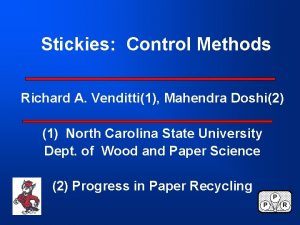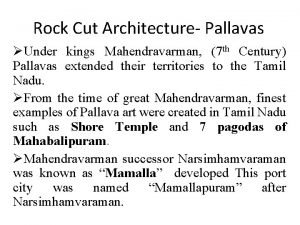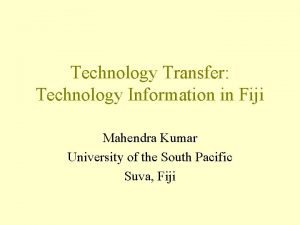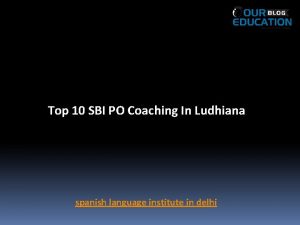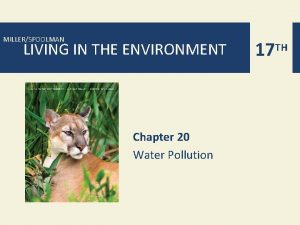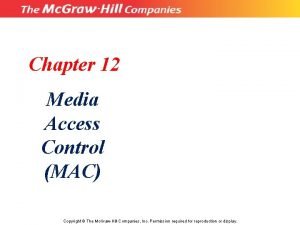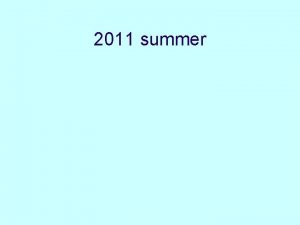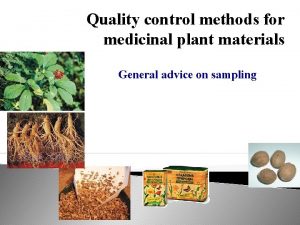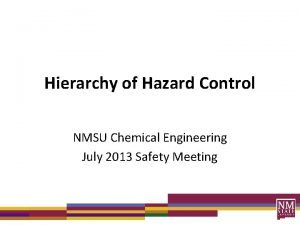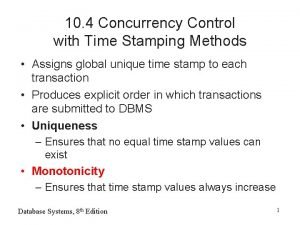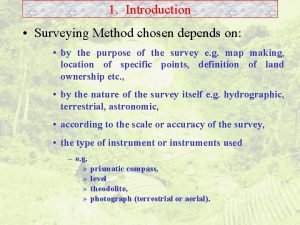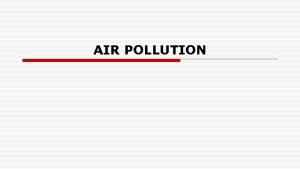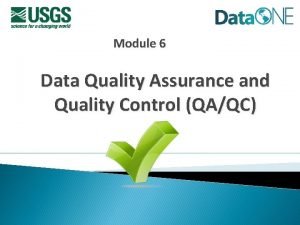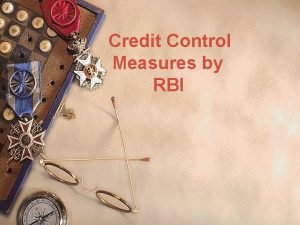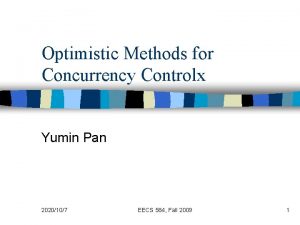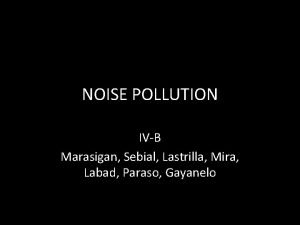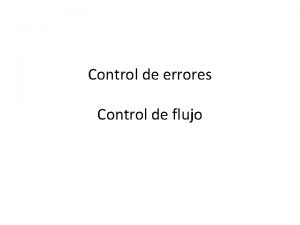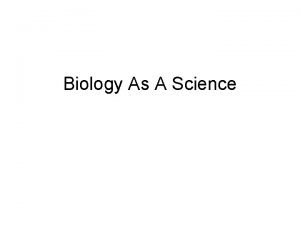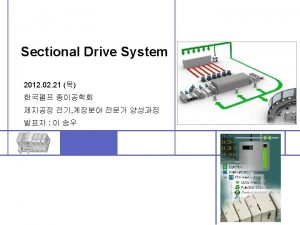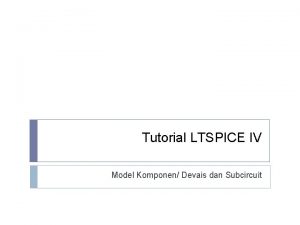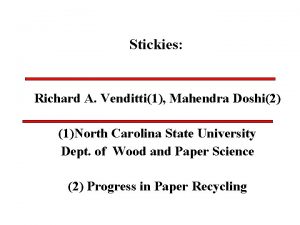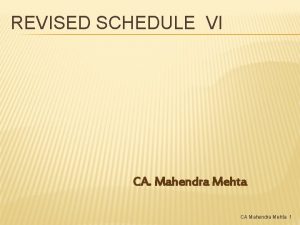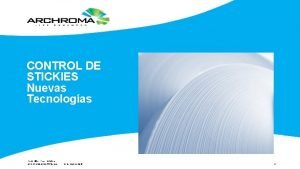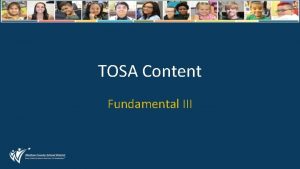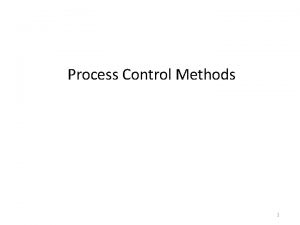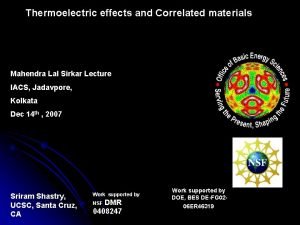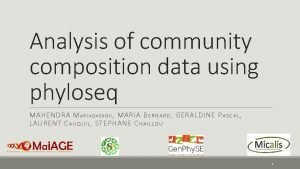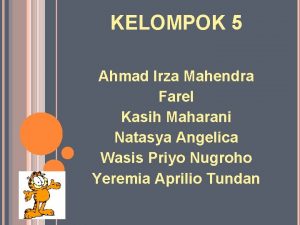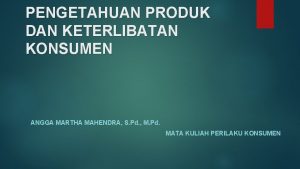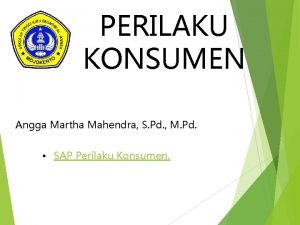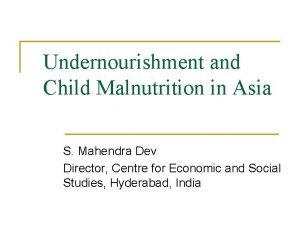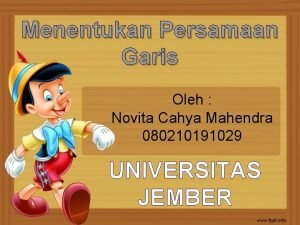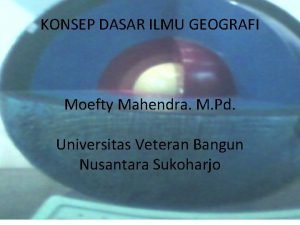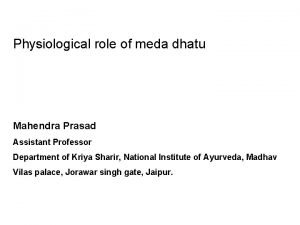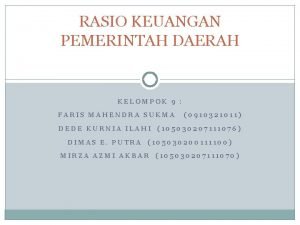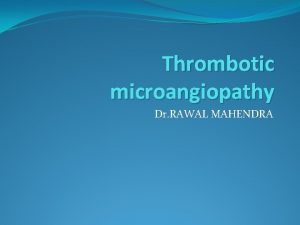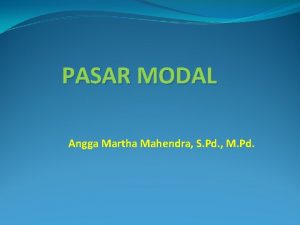Stickies Control Methods Richard A Venditti1 Mahendra Doshi2


































- Slides: 34

Stickies: Control Methods Richard A. Venditti(1), Mahendra Doshi(2) (1) North Carolina State University Dept. of Wood and Paper Science (2) Progress in Paper Recycling

Control and Removal Methods for Stickies – Use of environmentally benign adhesive (recyclable adhesive) – Avoidance: Control of recovered paper quality – Mechanical removal: screening and water clarification – Chemical control: polymers surfactants, others – Passivation with inorganics – Enzyme hydrolysis – Physical adsorption to paper fibers: retention – Dispersion – Protection: treatment of equipment to limit deposits – Mill shut down for clean-up

Governmental efforts to promote benign adhesives – US Postal Service, USPS P 1238 -F, qualifies products, • all stamps are EBA – Document E. O. 13148, “Greening the Government Through Leadership in Environmental Management”, was signed on April 21, 2000. • Mandates use of EBA’s for government purchases • Not all tapes and labels are EBA – Cost circa $100, 000 in United States

Control and Removal Methods for Stickies – Use of environmentally benign adhesive (recyclable adhesive) – Avoidance: Control of recovered paper quality – Mechanical removal: screening and water clarification – Chemical control: polymers surfactants, others – Passivation with inorganics – Enzyme hydrolysis – Physical adsorption to paper fibers: retention – Dispersion – Protection: treatment of equipment to limit deposits – Mill shut down for clean-up

Recovered Paper Quality Control • Stickies - Plastic films - Dirt - Brightness -Groundwood - Glass, Metal -Strength -Municipal trash -Coated - Uniformity

What to measure in bales if stickies are the concern? 1. Visually inspect outside of bales for stickers…. 2. Visually inspect bale after opening. 3. Can supplier/location/grade be identified with high stickies content: keep track? 4. Reject bales with justification or simply discuss needs with supplier.

Control and Removal Methods for Stickies – Use of environmentally benign adhesive (recyclable adhesive) – Avoidance: Control of recovered paper quality – Mechanical removal: screening and water clarification – Chemical control: polymers surfactants, others – Passivation with inorganics – Enzyme hydrolysis – Physical adsorption to paper fibers: retention – Dispersion – Protection: treatment of equipment to limit deposits – Mill shut down for clean-up

Pulper Performance • • Often can not change parameters Gentle pulping Drum pulping Pre soaking Short pulping time Low temperature Low p. H

Analysis of Macro Stickies - SOW M. A. Pikulin, AF&PA and USPS Joint Conference to Address PSA Issues, June 1996

Intense Forces in a Pressure Screen Break/Deform Adhesives: Decreases Screening Efficiency “Thousands of small particles generated” Pressure Screening Shredding makes particles more 1 -dimensional Accepts +Rejects Feed

Improved screening efficiency: • Lower consistency • Lower pressure drop • Lower temperature • Lower passing velocity • Feed forward versus cascade arrangement

SCREENING SYSTEM Simple Common Sense Principles 1. Do not mix a clean stream with a dirty stream. 2. Avoid recirculation of contaminants.

SCREENING SYSTEMS Conventional Cascade Arrangement FEED ACCEPTS REJECTS

SCREENING SYSTEM Forward Cascade ?

SCREENING SYSTEM 0. 008” slots 0. 006” slots Or higher reject ratio

SCREENING SYSTEMS Forward Flow Arrangement FEED ACCEPTS REJECTS

SCREENING SYSTEMS Forward Flow Arrangement FEED ACCEPTS REJECTS

Control and Removal Methods for Stickies – Use of environmentally benign adhesive (recyclable adhesive) – Avoidance: Control of recovered paper quality – Mechanical removal: screening and water clarification – Chemical control: polymers surfactants, others – Passivation with inorganics – Enzyme hydrolysis – Physical adsorption to paper fibers: retention – Dispersion – Protection: treatment of equipment to limit deposits – Mill shut down for clean-up

Improved micro stickies removal efficiency: • Improvement to the water clarification process. • Maximum air addition and retention time. • Proper type/dosage/mixing of chemicals. • Routine testing of suspended solids removal. • Additional clarifier capacity

Control and Removal Methods for Stickies – Use of environmentally benign adhesive (recyclable adhesive) – Avoidance: Control of recovered paper quality – Mechanical removal: screening and water clarification – Chemical control: polymers surfactants, others – Passivation with inorganics – Enzyme hydrolysis – Physical adsorption to paper fibers: retention – Dispersion – Protection: treatment of equipment to limit deposits – Mill shut down for clean-up

Additives to Combat Stickies • Solids/Slurry – Inorganic (Talc) • Liquids/Emulsions – Inorganic (Zirconium Compounds) – Organic • Cationic fixatives to fibers • Anionic (Negative Charge) • Nonionic (Surfactant)—stabilize adhesive particles • Starch or cyclodextrins • Enzymes: hydrolyze ester groups making stickies more stable

U. S. Pat. No. 3, 992, 249, Farley, November 1976 teaches using an aqueous solution of an anionic polymer containing hydrophobic-oleophilic linkages and hydrophilic acid linkages in pulp making system. These polymers are used to inhibit pitch deposition in these systems. U. S. Pat. No. 4, 190, 491, Drennan et al. , February 1980 teaches controlling pitch using a water-soluble linear cationic polymer. The polymers can contain vinyl acetate groups. U. S. Pat. No. 4, 765, 867 Dreisbach et al. , August 1988 teaches using a watersoluble quaternized polyamine ionene polymer to inhibit pitch deposition from pulp. U. S. Pat. No. 4, 846, 933, Dreisbach et al. , July 1989 teaches pitch control using a polymer containing polymerized units of methyl vinyl ether having methyl ether groups.

Control and Removal Methods for Stickies – Use of environmentally benign adhesive (recyclable adhesive) – Avoidance: Control of recovered paper quality – Mechanical removal: screening and water clarification – Chemical control: polymers surfactants, others – Passivation with inorganics – Enzyme hydrolysis – Physical adsorption to paper fibers: retention – Dispersion – Protection: treatment of equipment to limit deposits – Mill shut down for clean-up

Physical adsorption to paper fibers: retention – Cationic polymers with high charge density and low MW to fix anionic stickies to anionic fibers – Possibility to use starch, proteins, alum and others… – Needs good mixing in stock prep area – Requires passivation of papermaking equipment

Control and Removal Methods for Stickies – Use of environmentally benign adhesive (recyclable adhesive) – Avoidance: Control of recovered paper quality – Mechanical removal: screening and water clarification – Chemical control: polymers surfactants, others – Passivation with inorganics – Enzyme hydrolysis – Physical adsorption to paper fibers: retention – Dispersion – Protection: treatment of equipment to limit deposits – Mill shut down for clean-up

Dispersion • Dispersing System: – Process stock is dewatered to 30%K – Clods of stock are broken in the breaker screw – Steam introduced into a heating screw to increase temperature to 185 -245 C – Stock fed to dispersing unit – Stock is diluted and agitated for further processing

Single Shaft Kneader • • Process stock is dewatered to 30% K Stock enters a feed screw, steam or bleaching chemical may be added Stock is kneaded Stock is discharged, diluted and agitated for further processing

Kneading vs. Dispersion Methods to decrease contaminant size.

Dispersion – Must have excellent washing and water clarification directly after dispersion – Should use an additive to pacify the particles – Otherwise, the problem will worsen for papermachine – Not recommended, energy intensive and harm to the fibers

Control and Removal Methods for Stickies – Use of environmentally benign adhesive (recyclable adhesive) – Avoidance: Control of recovered paper quality – Mechanical removal: screening and water clarification – Chemical control: polymers surfactants, others – Passivation with inorganics – Enzyme hydrolysis – Physical adsorption to paper fibers: retention – Dispersion – Protection: treatment of equipment to limit deposits – Mill shut down for clean-up

Prevention of pitch and stickies deposition on paper-forming wires via adsorption of a cationic polymer associated with anionic species • Deposition of colloidally dispersed pitch and stickies on papermachine wires etc is due to hydrophobic-hydrophobic interaction. “like dissolves like” • Machine deposition is decreased if the hydrophobicity of the forming wires and/or the hydrophobicity and tackiness of the stickies are reduced. • Cationic polymers associated with anionic species and these complexes subsequently adsorbed onto polyester forming fabric materials, rendering them hydrophilic and preventing deposition. • Tappi journal, 1998, vol. 81(6), pp. 143 -151.

Control and Removal Methods for Stickies – Use of environmentally benign adhesive (recyclable adhesive) – Avoidance: Control of recovered paper quality – Mechanical removal: screening and water clarification – Chemical control: polymers surfactants, others – Passivation with inorganics – Enzyme hydrolysis – Physical adsorption to paper fibers: retention – Dispersion – Protection: treatment of equipment to limit deposits – Mill shut down for clean-up

If a clean-up is needed: – The amount of residual cleaner in the paper machine water loop should be minimized if not reduced to zero concentration – Basically, cleaners are dispersants for stickies, any residual cleaning material can actually interact with stickies and possibly cause increased stickies deposits – Follow the instructions of the cleaner manufacturer carefully

Questions? ? ?
 Stickies control
Stickies control Mandagapattu rock cut temple
Mandagapattu rock cut temple Banking coaching in dehradun
Banking coaching in dehradun Mahendra kumar fiji
Mahendra kumar fiji Pallavas art
Pallavas art Mahendra institute ludhiana
Mahendra institute ludhiana King richard iii and looking for richard
King richard iii and looking for richard Metal coping fpd
Metal coping fpd Methods of water pollution
Methods of water pollution Media access control methods
Media access control methods Methods of portion control in bread and pastry
Methods of portion control in bread and pastry Nominal length in surveying
Nominal length in surveying Quality control methods for medicinal plant materials
Quality control methods for medicinal plant materials Nmsu chemical engineering
Nmsu chemical engineering Time stamping in dbms
Time stamping in dbms Methods of establishing control points in surveying
Methods of establishing control points in surveying Air pollution control methods
Air pollution control methods Quality assurance definition
Quality assurance definition Credit control policy of rbi
Credit control policy of rbi On optimistic methods for concurrency control
On optimistic methods for concurrency control Noise pollution control
Noise pollution control Translational research institute on pain in later life
Translational research institute on pain in later life Difference between process control and product control
Difference between process control and product control Reynolds transport theorem
Reynolds transport theorem Stock control e flow control
Stock control e flow control Control volume vs control surface
Control volume vs control surface Negative control vs positive control
Negative control vs positive control Negative control
Negative control Jelaskan tentang error control pada data link control?
Jelaskan tentang error control pada data link control? Control de flujo parada y espera
Control de flujo parada y espera Negative control vs positive control examples
Negative control vs positive control examples Error control and flow control
Error control and flow control Sectional drive
Sectional drive Komponen pada ltspice
Komponen pada ltspice Richard borowski
Richard borowski
